#America Montana Tourism
Explore tagged Tumblr posts
Text
America Montana Tourism and Economy
As of my last knowledge update in January 2022, I can provide montana seo service general information about Montana's tourism and economy in the United States. Keep in mind that specific details may have changed, and it's advisable to check the latest sources for the most up-to-date information.
Tourism in Montana:
Natural Beauty:
Montana is renowned for its stunning natural landscapes, including Glacier National Park, Yellowstone National Park, and the Rocky Mountains. These attractions draw outdoor enthusiasts and nature lovers from around the world.
National Parks:
Glacier National Park, located in Montana, is a UNESCO World Heritage Site known for its glaciers, alpine meadows, and diverse wildlife.
Yellowstone National Park, which spans Montana and Wyoming, is famous for geothermal features like Old Faithful and abundant wildlife.
Recreational Activities:
Montana offers various recreational activities, such as hiking, camping, fishing, and skiing, attracting tourists seeking outdoor adventures.
Cultural and Historical Sites:
The state also boasts cultural and historical attractions, including the Lewis and Clark National Historic Trail and the Little Bighorn Battlefield National Monument.
Economy in Montana:
Agriculture:
Agriculture is a significant part of Montana's economy. Cattle ranching, wheat farming, and barley production are important contributors.
Natural Resources:
Montana has abundant natural resources, including timber, minerals, and energy resources. The extraction of coal, oil, and natural gas plays a role in the state's economy.
Tourism and Recreation:
Tourism contributes substantially to the state's economy. The influx of visitors to national parks, ski resorts, and outdoor recreational areas generates revenue for local businesses.
Technology and Innovation:
Some areas, particularly around cities like Bozeman, have seen growth in technology and innovation sectors, attracting entrepreneurs and professionals.
Small Business:
Montana has a diverse range of small businesses, including restaurants, shops, and services, contributing to the local economy.
Higher Education:
Higher education institutions, such as the University of Montana, contribute to the economy by providing education, research, and fostering innovation.
Energy Sector:
The energy sector, including renewable energy sources like wind and hydropower, is growing in importance.
Outdoor Industry:
The state's outdoor industry, including equipment manufacturing and outdoor gear retail, plays a role in both the economy and tourism.
Healthcare and Services:
Healthcare services and other service-oriented industries contribute to the overall economic landscape.
It's important to check with local and state seo service authorities or recent economic reports for the latest information on Montana's tourism and economy. Additionally, factors such as the COVID-19 pandemic may have influenced these sectors in recent times.
#America Montana Tourism and Economy#America Montana Tourism#montana seo#montana google customer care#seo service in montana
2 notes
·
View notes
Photo



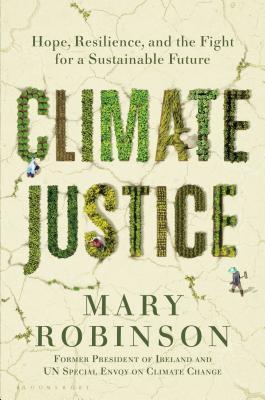
Book Recommendations: Earth Day
Guardians of the Valley by Dean King
In June of 1889 in San Francisco, John Muir—iconic environmentalist, writer, and philosopher—meets face-to-face for the first time with his longtime editor Robert Underwood Johnson, an elegant and influential figure at The Century magazine. Before long, the pair, opposites in many ways, decide to venture to Yosemite Valley, the magnificent site where twenty years earlier, Muir experienced a personal and spiritual awakening that would set the course of the rest of his life.
Upon their arrival the men are confronted with a shocking vision, as predatory mining, tourism, and logging industries have plundered and defaced “the grandest of all the special temples of Nature.” While Muir is consumed by grief, Johnson, a champion of society’s most pressing debates via the pages of the nation’s most prestigious magazine, decides that he and Muir must fight back. The pact they form marks a watershed moment, leading to the creation of Yosemite National Park, and launching an environmental battle that captivates the nation and ushers in the beginning of the American environmental movement.
Nature’s Best Hope by Douglas W. Tallamy
Douglas W. Tallamy’s first book, Bringing Nature Home, sparked a national conversation about the link between healthy local ecosystems and human well-being. In Nature's Best Hope, he takes the next step and outlines his vision for a grassroots, home-grown approach to conservation.
Nature's Best Hope advocates for homeowners everywhere to turn their yards into conservation corridors that provide wildlife habitats. This home-based approach doesn’t rely on the federal government and protects the environment from the whims of politics. It is also easy to do, and readers will walk away with specific suggestions they can incorporate into their own yards.
Nature's Best Hope is nature writing at its best—rooted in history, progressive in its advocacy, and above all, actionable and hopeful. By proposing practical measures that ordinary people can easily do, Tallamy gives us reason to believe that the planet can be preserved for future generations.
The National Parks by Dayton Duncan
America’s national parks spring from an idea as radical as the Declaration of Independence: that the nation’s most magnificent and sacred places should be preserved, not for royalty or the rich, but for everyone. In this evocative and lavishly illustrated narrative, Ken Burns and Dayton Duncan delve into the history of the park idea, from the first sighting by white men in 1851 of the valley that would become Yosemite and the creation of the world’s first national park at Yellowstone in 1872, through the most recent additions to a system that now encompasses nearly four hundred sites and 84 million acres.
The authors recount the adventures, mythmaking, and intense political battles behind the evolution of the park system, and the enduring ideals that fostered its growth. They capture the importance and splendors of the individual parks: from Haleakala in Hawaii to Acadia in Maine, from Denali in Alaska to the Everglades in Florida, from Glacier in Montana to Big Bend in Texas. And they introduce us to a diverse cast of compelling characters—both unsung heroes and famous figures such as John Muir, Theodore Roosevelt, and Ansel Adams—who have been transformed by these special places and committed themselves to saving them from destruction so that the rest of us could be transformed as well.
Climate Justice by Mary Robinson
Holding her first grandchild in her arms in 2003, Mary Robinson was struck by the uncertainty of the world he had been born into. Before his fiftieth birthday, he would share the planet with more than nine billion people--people battling for food, water, and shelter in an increasingly volatile climate. The faceless, shadowy menace of climate change had become, in an instant, deeply personal.
Mary Robinson's mission would lead her all over the world, from Malawi to Mongolia, and to a heartening revelation: that an irrepressible driving force in the battle for climate justice could be found at the grassroots level, mainly among women, many of them mothers and grandmothers like herself. From Sharon Hanshaw, the Mississippi matriarch whose campaign began in her East Biloxi hair salon and culminated in her speaking at the United Nations, to Constance Okollet, a small farmer who transformed the fortunes of her ailing community in rural Uganda, Robinson met with ordinary people whose resilience and ingenuity had already unlocked extraordinary change.
#earth day#nature#science#conservation#Environment#nonfiction#nonfiction books#Nonfiction Reading#nonfiction reads#Library Books#Book Recommendations#book recs#reading recommendations#Reading Recs#TBR pile#tbr#tbrpile#to read#Want To Read#Booklr#book tumblr#book blog#library blog
2 notes
·
View notes
Text
Private Expeditions Santiago
Discover the beauty of the Santiago mountains with our private tours. Personalized experiences and stunning landscapes just for you.
Private Expeditions Santiago
About Company:-
Mountains fascinate us. Climbing mountains has changed the way we see and appreciate life. We are mountains because we are nature, we vibrate with it and we connect with who we really are.
The starry sky, the crunching of stones on the road or simply drinking glacier water to quench your thirst. At Puma Adventures we inspire the community to take their trips to the next level: always closer to nature.
Our country has been awarded the World Travel Awards - the “Oscars of tourism” - 9 consecutive times, as Best Adventure Tourism Destination in South America. As if this were not enough, in 2022 Chile achieved the title of Best Destination in South America.
We are tour operators specialized in Chile. Whether you are Chilean or foreign, we guide you through the Andes Mountains, our mountain, so that you can get to know its landscapes and wildlife like no one else could.
Click Here For More info - https://pumaadventures.com/en/tours-privados-montana-santiago/
Social Media Profile URL -https://www.facebook.com/pumaadventures.chile
0 notes
Text
Climate of Montana
Montana, often referred to as "Big Sky Country" or "The Treasure State," is located in the western United States. It is the fourth largest state by area, covering diverse landscapes ranging from the Great Plains to the Rocky Mountains. Here's an overview of Montana's geography, climate, and notable features:
Geography:
Montana is bordered by Canada to the north, North Dakota and South Dakota to the east, Wyoming to the south, and Idaho to the west.
The Rocky Mountains traverse the western part of the state, including iconic peaks such as the Beartooth Mountains, Absaroka Range, and Bitterroot Range.
The eastern part of Montana consists of vast plains, part of the Great Plains region of North America.
The Continental Divide runs through Montana, separating the watersheds that drain into the Pacific Ocean from those that flow into the Gulf of Mexico. See more: https://weatherusa.app/zip-code/weather-59242 https://weatherusa.app/zip-code/weather-59241 https://weatherusa.app/zip-code/weather-59219
Climate:
Montana experiences a variety of climates due to its diverse topography. Generally, it has a semi-arid to continental climate.
Winters in Montana are cold, with temperatures often dropping well below freezing. Snowfall is common, particularly in mountainous regions.
Summers are generally warm to hot, with temperatures varying based on elevation and proximity to mountain ranges.
Precipitation levels vary across the state, with the western mountains receiving more moisture than the eastern plains.
Montana is known for its clear skies and abundant sunshine, particularly in the eastern regions.
See Weather Forecast for Montana today: https://weatherusa.app/montana
Natural Resources and Economy:
Montana is rich in natural resources, including minerals such as coal, copper, and gold. It also has vast forests and abundant wildlife.
Agriculture is a significant part of Montana's economy, with cattle ranching, wheat farming, and barley production being prominent. The state is also known for its huckleberries and honey.
Tourism plays a major role in Montana's economy, with millions of visitors drawn to its national parks, wilderness areas, and outdoor recreational opportunities such as hiking, fishing, and skiing.
The state's energy sector, including oil and natural gas extraction, contributes to its economy, although it has also been a topic of environmental and economic debate.
Culture and Heritage:
Montana has a rich cultural heritage, shaped by Native American tribes such as the Blackfeet, Crow, and Cheyenne.
The state has a strong cowboy and ranching tradition, reflected in its rodeos, cattle drives, and western-themed events.
Montana's history is intertwined with the frontier era, mining booms, and the development of the railroad, which brought settlers and commerce to the region.
Native American reservations are an integral part of Montana's cultural landscape, preserving traditions and providing unique cultural experiences for visitors.
See more: https://weatherusa.app/zip-code/weather-59214
https://weatherusa.app/zip-code/weather-59212
https://weatherusa.app/zip-code/weather-59088
https://weatherusa.app/zip-code/weather-59087
https://weatherusa.app/zip-code/weather-59074
Overall, Montana's stunning natural beauty, rugged terrain, and diverse ecosystems make it a captivating destination for outdoor enthusiasts, adventurers, and those seeking a connection with the American West.

Indeed, Montana's landscape is defined by the striking contrast between its western Rocky Mountains and eastern Great Plains regions. Here's a closer look at each:
Rocky Mountain Montana:
The western part of Montana, comprising about two-fifths of the state, is dominated by the rugged Rocky Mountains.
This region is characterized by towering peaks, deep valleys, and pristine alpine lakes, making it a haven for outdoor enthusiasts and nature lovers.
Glacier National Park, located in northwestern Montana, showcases some of the most dramatic mountain scenery in the state, including jagged peaks, glaciers, and dense forests.
The Rocky Mountains provide habitat for diverse wildlife species, including grizzly bears, elk, mountain goats, and bighorn sheep.
The Continental Divide runs through this mountainous region, separating watersheds that flow into the Pacific Ocean from those that flow into the Gulf of Mexico.
See more: https://edition.cnn.com/2024/05/03/weather/texas-houston-flooding-tornadoes/index.html
Great Plains Montana:
The eastern three-fifths of Montana consist of expansive Great Plains, characterized by vast grasslands, agricultural fields, and rolling hills.
This region is known for its wide-open spaces, with sweeping vistas and big skies that seem to stretch endlessly.
Agriculture is a prominent industry in Great Plains Montana, with wheat farming, cattle ranching, and barley production being major contributors to the economy.
Towns and communities in this area often reflect the region's agricultural heritage, with many small farming towns dotting the landscape.
Despite its relatively flat terrain, the Great Plains region of Montana has its own beauty, particularly during the changing seasons when fields of wheat and grasslands take on hues of gold, amber, and green.
The contrast between Rocky Mountain Montana and Great Plains Montana is indeed one of the defining features of the state's geography, offering visitors and residents alike a diverse range of landscapes and experiences to explore and enjoy.
The climate of Great Plains Montana is characterized by its semiarid nature, with distinct seasons and notable temperature extremes:
Summer: Hot summers are typical in Great Plains Montana, with temperatures often exceeding 90°F (32.2°C) during the day. The lack of significant humidity provides some relief from the heat, but conditions can still be quite dry.
Winter: Winters are cold and harsh, with temperatures frequently dropping below freezing. January temperatures average in the upper 10s F (about -8°C), and frost or freezing occurs more than 200 days of the year. While total snowfall is light, occasional heavy snowstorms can occur, particularly in the northern parts of the region.
Precipitation: Average annual precipitation is scant, measuring about 13 inches (330 mm). This limited rainfall contributes to the semiarid conditions of the area. The plains are subject to cycles of drought followed by periods of unusually heavy rainfall and flooding.
See more: https://weatherusa.app/zip-code/weather-59044
https://weatherusa.app/zip-code/weather-59058
Chinook Winds: The chinook, a warm winter wind that blows on the plains near the foot of the Rockies, periodically interrupts the bitter cold. These winds can cause rapid temperature changes and provide temporary relief from the winter chill.
In contrast, Rocky Mountain Montana exhibits a range of climates dictated by elevation:
Lowest Zones: The climate of the lowest elevational zones, such as dry valley bottoms, is similar to that of eastern Montana, with semiarid conditions and hot summers.
Higher Elevations: As elevation increases, climates become progressively cooler, wetter, and more snowy. Temperatures are cooler at higher elevations, and precipitation increases, often in the form of snowfall. Forested areas in the Rocky Mountains receive more moisture and experience more snowfall compared to the lower elevations.
Overall, the diverse climates of Montana's Rocky Mountains and Great Plains contribute to the state's rich ecological diversity and provide a range of environments for various outdoor activities and ecosystems.
0 notes
Text
Montana to South Carolina LTL Freight Quote
Title: From Big Sky to the Palmetto State: Your Guide to Montana to South Carolina LTL Freight Quote At the crossroads of the nation's transportation network, LTL (Less than Truckload) Freight services form the bedrock of America's logistics and supply chain industry. One route that is steadily gaining prominence for its economic significance is the Montana to South Carolina Freight corridor. Stretching from the mountainous terrains of Montana, known as the Big Sky Country, to South Carolina's coastline known as the Palmetto State, this route carves a pathway through the heartland of America and connects two incredibly diverse economies. Montana is a state that is defined by its rural charm, rugged landscapes, and its booming industries; from agriculture to mining to manufacturing. The state's robust freight infrastructure is essential to support these industries and maintain Montana's economic vitality. On the other hand, South Carolina's economy is powered by a diverse mix of industries including manufacturing, agriculture, tourism, and a growing technology sector. The efficient movement of goods from Montana to South Carolina forms an essential link in the supply chain of these industries. Getting an LTL Freight Shipment Rate for Montana to South Carolina is now easier than ever. Thanks to technological advancements, shippers can get a Free Online LTL Freight Quote in just a few clicks. Whether you're shipping agricultural produce, manufacturing goods, or any other commodities, getting an accurate Montana to South Carolina LTL Freight Quote ensures that your cargo reaches its destination on time and at an affordable cost. Understanding the LTL freight quote involves considering several factors such as distance, weight, and freight class. The distance between Montana and South Carolina is considerable, spanning across multiple states. The weight and freight class of your shipment will also play a significant role in determining the overall cost. However, with competitive LTL Freight Shipment Rates for Montana to South Carolina, businesses can optimize their logistics costs and ensure smooth operations. The advantage of using LTL freight services is the flexibility it provides compared to full truckload (FTL) services. With LTL, you pay for the truck space your freight occupies, making it a cost-effective option for small and medium-sized businesses. It also allows for flexible pickup and delivery schedules, tracking of shipments, and improved security for your goods. To unlock the best LTL Freight Quote Rate for Montana to South Carolina, simply complete the FREE LTL Quote form. Once you submit the required details, an Source: https://www.ltlfreighthub.com/montana-to-south-carolina-ltl-freight-quote/ Montana to South Carolina LTL Freight Quote
0 notes
Photo

Medicine Lake - Montana - USA (by Ryan McKee)
#Medicine Lake#Montana#US#USA#United States#America#View#Viewpoint#Nature#Landscape#Outdoor#Lake#Photography#Travelling#traveling#travel#Tourism#Holiday#Urlaub#Reisen
545 notes
·
View notes
Photo

Logan Pass - Glacier National Park - Montana - USA (by Diana Robinson)
#Logan Pass#Glacier National Park#Montana#US#USA#united state#North america#America#Nature#Landscape#Outdoro#View#Viewpoint#Photography#Travelling#Traveling#Travels#Tourism#Holiday#Urlaub#Reisen
824 notes
·
View notes
Photo

September Morning Berries
Photo: Red Lodge, Montana
#montana#red lodge#rocky mountains#absaroka range#beartooth highway#big sky#big sky country#the treasure state#huckleberries#river#nature#september#fall#autumn#hiking#the great outdoors#america the beautiful#travel#tourism#road trip#adventure#explore#usa#western usa#wild west#mt
7 notes
·
View notes
Photo

#glacier national park#montana#america#united states#sunset#mountains#photography#art#landscape#travel#tourism#beautiful#love#nature#amazing#scenery#aesthetic#wanderlust#traveling#skyline#sky#woods#outdoors
127 notes
·
View notes
Note
Ah man I'm so glad you made that post about ski resorts and racism, I never see content about the effects of ski resorts on the land. Keeping jumbo wild was a huge W and I was so glad to see it, and I hope it puts pressure on the people trying to push zincton through. I actually haven't heard much abt the zincton project lately, do you know of any updates? Thanks again for the content, so rarely hear other voices online from the inland temperate rainforest
Hey, thank you so much for the message. I know you’re also a fan of the region. Glad you saw that post and said something to me. :)
Yes, there has been some new media coverage of Zincton as of November 2020. And can I use this as an opportunity to say a couple of things about this rainforest? Sorry in advance for rambling and all of this text.
Right? The downfall of the Jumbo project was uplifting. Ski resorts obviously (like many “parks” in US and Canada) involve Indigenous dispossession and obscuring/erasure of histories and lives. (Details from that article: US sky resort visitors are 88% white, and half make over $100 thousand a year.) As for voices from the inland temperate rainforest: Gotta mention that the province of BC goes to such great lengths to silence the voices of the Sinixt people, declared “extinct” by the Canadian government and whose traditional territory includes much of the inland temperate rainforest (between 2016 and 2020, BC has fought against the Sinixt and their request for recognition, appealing every ruling, culminating in an October 2020 Supreme Court hearing). BC institutions like to claim the inland temperate rainforest as a “treasure” or “prize”, a “globally-unqiue” ecosystem, as a sort of entitlement or patrimony; meanwhile, the province of BC legally fights the Sinixt in court, ignores the caribou extinction, and still issues dozens of logging/timber and clear-cut contracts in the inland temperate rainforest each year. That said, the end of Jumbo was good news.
For anyone unfamiliar: Jumbo was a ski resort mega-development project planned for the Purcell Wilderness on Ktunaxa traditional territory right in the heart of the inland temperate rainforest region of interior so-called British Columbia, in old-growth cedar-hemlock forest, on the edge of glaciers, and in the middle of key habitat of southern mountain caribou, grizzly, wolverine, mountain lion, lynx, wolf, elk, mountain goat, marten, fisher, etc. The Glacier Resorts-owned project would’ve been “the single largest ski resort in North America” including a “resort base” of at least 110 hectares, a hotel with over 5,500 beds, and an expectation of over 3,000 visitors a day. The Ktunaxa had opposed the project since 1991, and took a case to federal Supreme Court. In January 2020, the Ktunaxa were able to buy-out the project, and the Jumbo area will now be managed as a formal Indigenous Protected Area.
The new Zincton resort is also being built on Ktunaxa and Sinixt land, about 70 kilometers away from the former Jumbo resort site.
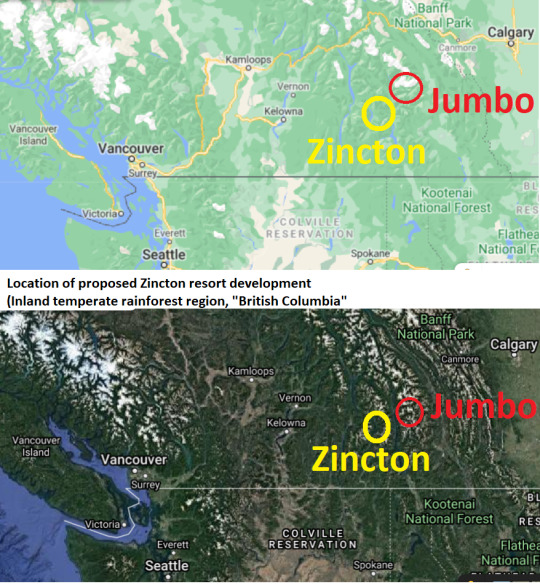
Traditional territories:
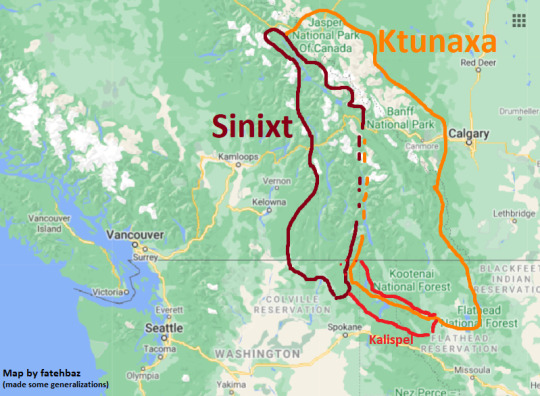
And yes, there are some updates on Zincton from November 2020.
@moss-effect -- I know that you already know this stuff. But for anyone unfamiliar:
The Zincton resort is being constructed only about 70-ish kilometers or so away from where the Jumbo resort was planned. Zincton is also on Ktunaxa territory, as well as traditional land of the Sinixt. Zincton (being built near Valhalla and Goat Range, between Naksup and Kaslo) expects a “grand opening” in December 2021. The project is run by the owner/founder of a local outfitter/recreation company. As of November 2020, BC’s Mountain Resorts Branch is still reviewing the owner’s formal proposal. Zincton sits closer to even more extensive old-growth forest and major protected areas.
Zincton also seems to be a manifestation of that now-classic category: “progressive” settler-colonial entrepreneurs from coastal BC, the Pacific Northwest, and/or Rocky Mountain West are familiar with local rhetoric and therefore elude criticism by rebranding their extractive and development projects as “eco-friendly”. According to The Narwhal (November 2020) the owner/project leader had this to say about the project: “There is a real story here of a proven disruptor facing down the mob to do one last project for the kids and grandkids. … Jobs for locals, a future for families, saving the hospital. Zincton is the Tesla of the ski village business.”
-------
Also, for context: Here’s a post I made about the inland temperate rainforest, its ecology/geography, and its endemic creatures. Here’s a post from June 2020 about the Zincton resort development. Here’s a compilation post with news/timeline/summary and maps describing the extinction of southern mountain caribou in 2019 (southern mountain caribou are a local icon, completely endemic to this region, and are highly endangered; caribou were declared extinct in the contiguous United States in 2019 when the last of the southern mountain caribou were relocated farther north to BC). Here’s a compilation post with news/timeline following the Sinixt case to receive formal recognition from BC/Canada in 2019 and 2020 (much of the rainforest, including the Zincton site, is within Sinixt traditional territory; the Canadian government declared the Sinixt “extinct” in the 1950s).
-------
Location of core cedar-hemlock forest of inland temperate rainforest region, compared with distribution range of the southern mountain caribou:
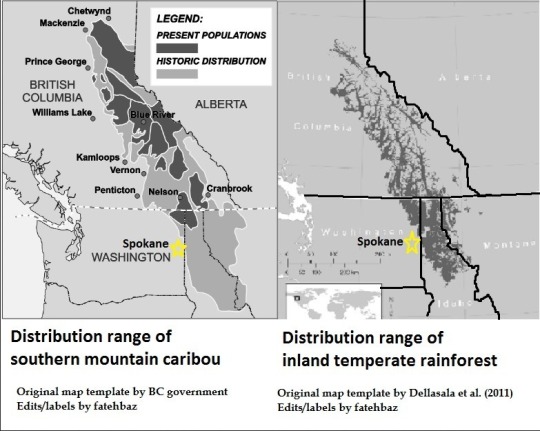
Photos I took of stream habitat in inland temperate rainforest:
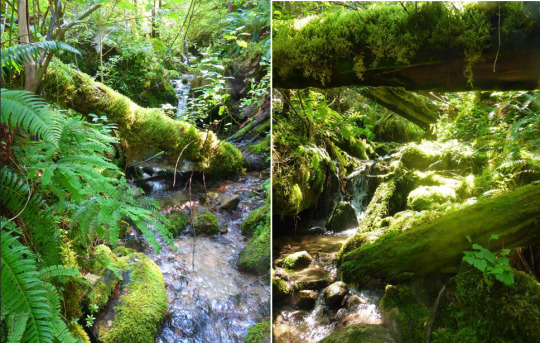
-------
Coincidentally, just a couple of days ago, The Narwhal just released an “explainer” dedicated to the Zincton: Paul Fischer. “Why B.C.’s Zincton resort, the proposed ‘Tesla of ski villages,’ is worrying conservationists.” The Narwhal. 27 November 2020.
Zincton claims that it is a “radical departure from the status quo” and will be a “carbon-zero” resort. But local groups oppose the project, including Wildsight, West Kootenay Eco Society, and locally-famous Valhalla Wilderness Society. (The core of the inland temperate rainforest is sometimes referred to as “Valhalla” or “Caribou Rainforest”.) The project also claims that the resort’s focus on so-called “eco-tourism” is a good way to “grow and replace economic decline,” which you might perceive to be a settler-colonial interpretation of the “value” of the forest and also suggests that the concern here is, of course, making money. From Fischer’s article: ‘In a series of emails with The Narwhal, Harley [the project leader] dismissed environmental concerns. He said impacted grizzly habitats are low quality and categorized the criticism from certain environmental groups as a “copy and paste” campaign motivated by a desire to oppose everything rather than contribute constructively.’
These quotes can be found in the article:







-------
Here’s some other stuff:
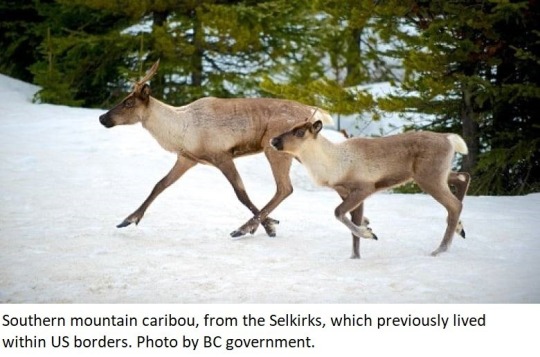
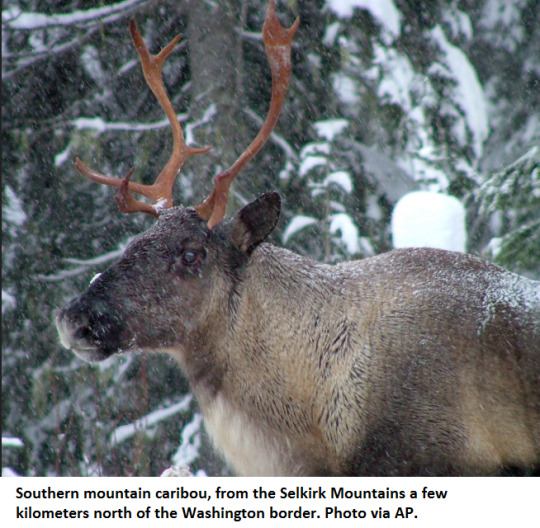
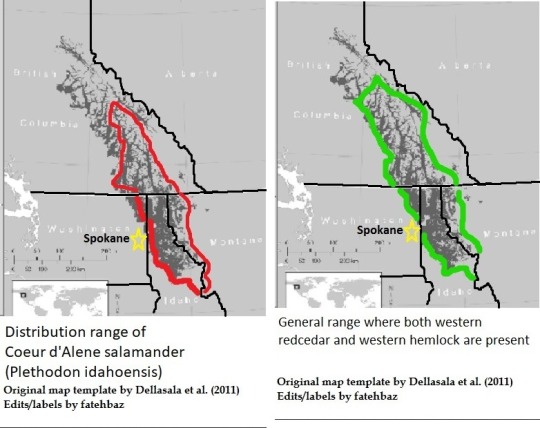
-------
Headlines from the Jumbo resort news:
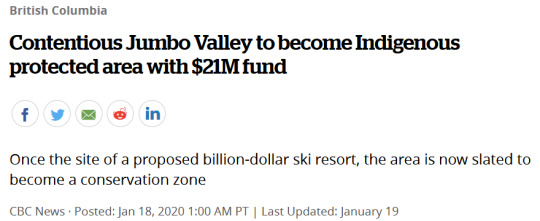
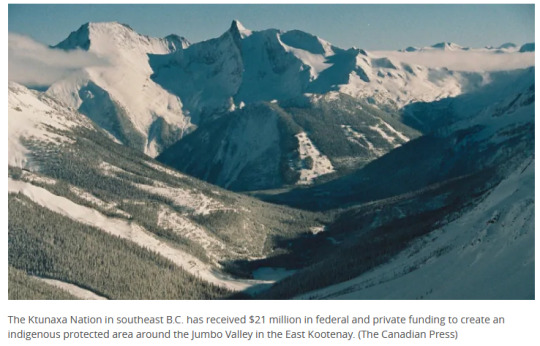
The Sinixt case:
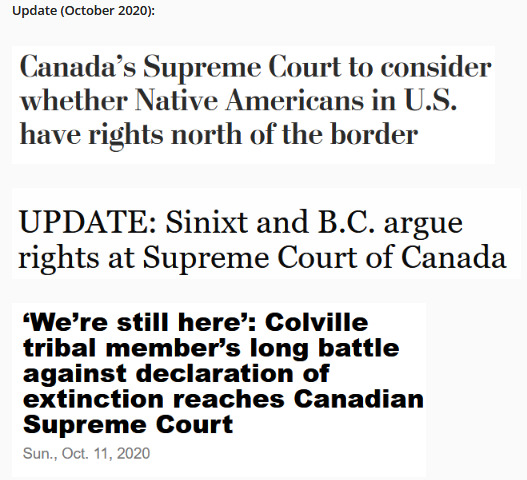
Southern mountain caribou herd decline in the inland temperate rainforest between 1990 and 2018. The Zincton resort will directly affect Purcells South, Central Selkirks, and South Selkirks herd.
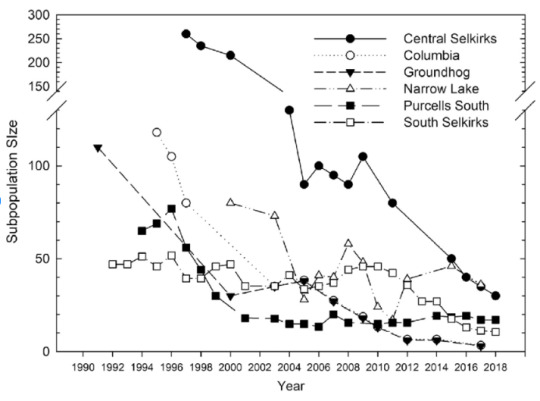

-------
And I want to say that both the Ktunaxa and Sinixt people have recently been undermined, insulted, and dispossessed by BC and development projects in similar ways. Media, educational material, and conservation groups in BC like to point out that the inland temperate rainforest is “globally-unique” (in that it’s really the planet’s only sizable “coastal-type temperate rainforest” existing inland and away from a coast). And you’ll see the inland temperate rainforest described with terms like: prized, treasure, gem, hidden/secret rainforest, etc. And the region is discussed in settler-colonial terms/concepts (”BC’s forgotten rainforest,” “BC’s other rainforest”, “a magnificent carbon cache”, “unparalleled resource”) as if it is the patrimony of the province of BC or Canadian state. Which of course is problematic because it (1) associates the forest’s importance with bioprospecting/scientific extractivism, carbon sequestration, or other metrics of settler-colonial “value,” and also because (2) the province of BC continues to fight very hard against recognizing the land as part of Sinixt territory (after Sinixt people and allies were able to win cases against BC, the province continued to appeal, and this case has now culminated in the October 2020 hearing at the federal Supreme Court, which will soon make a final ruling on whether or not Sinixt people are legally allowed land rights to harvest, travel, etc. within BC).
-------
Here’s a map:
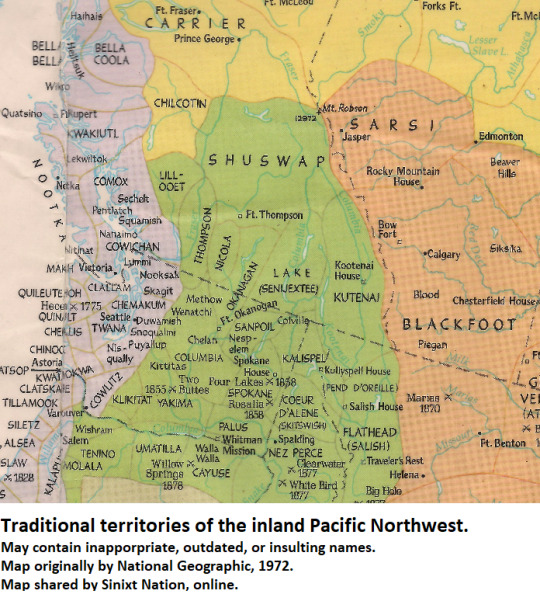
From 2018, there is this book:

In the US, too, parks, like ski resorts, are implicated in Indigenous dispossession.
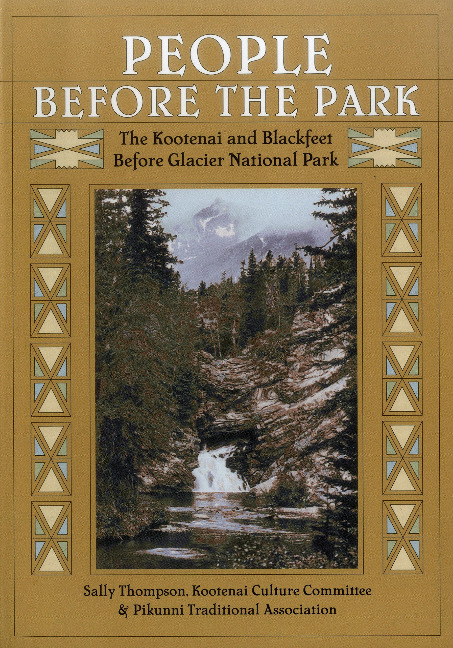
Glacier National Park (at the border of BC, Alberta, and Montana) sits on the edge of the Kootenay and inland temperate rainforest regions. Conservation groups, universities, and other US institutions have taken to calling Glacier part of “the Crown of the Continent” (another possessive/patrimonial term maybe?), a portion of the heavily-glaciated Canadian Rockies that kinda includes Banff and Jasper, too. Glacier National Park is on Ktunaxa and Blackfeet territory. A recently published book that might be interesting: People Before the Park: The Kootenai and Blackfeet Before Glacier National Park. Sally Thompson, Kootenai Cultural Committee, and Piikuni Traditional Association. 2015
Described by Montana Public Radio in 2017: “Step [...] into the world of the Kootenai and Blackfeet peoples, whose traditional territories included the area that is now Glacier National Park. [...] In this book, the Kootenai and Blackfeet tribes share their traditions -- stories and legends, foodways and hunting techniques, games and spiritual beliefs.”
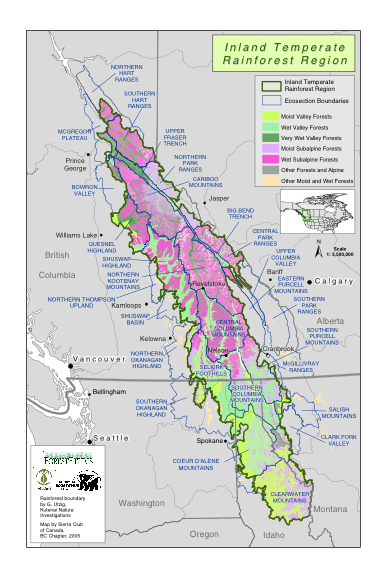
Just a special place.
Thank you for saying something.
292 notes
·
View notes
Text
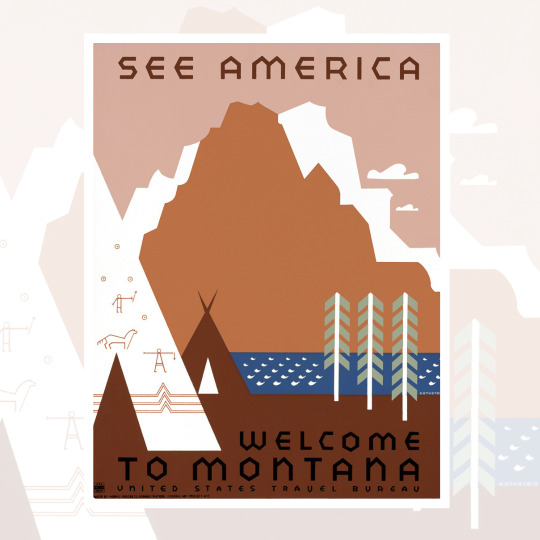
From 1939 and Jerome Henry Rothstein, a Works Progress Administration/Federal Art Project poster promoting tourism in Montana. Published for the United States Travel Bureau. The poster depicts an Indian encampment next to a lake.
Buy See America Welcome to Montana poster | National Park Posters
18 notes
·
View notes
Video
@egyptianroyalfamily @alsisiofficial @cairo24 🌟📚🌟✍️🛑 I haven't seen Egypt in about 21 years 📚📝🙄🛑 Despite all the circumstances, Egypt remains a country of history and civilization. 📚🌟📚🛑✍️ I graduated from Cairo University, which is the oldest university in the Middle East.. I am honored because I graduated from Cairo University. I received my master's and doctorate from Bedford University from the United States of America..But I was born in the UAE, Abu Dhabi, and completed the stages of education in Umm Ammar schools, which are government schools. ..I want to tell you about Egypt..Egypt is the country of beauty and kindness..It is the country of all religions.In Egypt there are mosques, churches and Jewish temples.Egypt is a large country and consists of many provinces and its army is the eighth in the world..Egypt is a country of drama, art and science. ..Egypt presented to the world the most famous scholars and the most famous writers. When I graduated from the university, I worked for two years as a journalist in Parliament..I had not visited Egypt for 22 years...I live between the Emirates and Britain and then America...I lived in Britain for six years and worked as a reporter. To Buckingham Palace....The longing took me to Egypt...Suddenly I remembered the evenings with friends in Egypt at the casinos of the Nile. I miss Egypt so much. #egy #egypt #egyptian #cairo #egyptfashion #egyptology #egyptshots #الغردقه #مصر #الاسكندريه #tourism #washingtondc #newyorkcity #newjersey #newmexico #chicago #canada #california #losangeles #london #england #europe #norway #denmark #switherland #swiss #montana #monaco #italy#instagram https://www.instagram.com/p/CTPx4FUJvN7/?utm_medium=tumblr
#egy#egypt#egyptian#cairo#egyptfashion#egyptology#egyptshots#الغردقه#مصر#الاسكندريه#tourism#washingtondc#newyorkcity#newjersey#newmexico#chicago#canada#california#losangeles#london#england#europe#norway#denmark#switherland#swiss#montana#monaco#italy#instagram
3 notes
·
View notes
Photo

The Great Lakes Region, featuring New York, Pennsylvania, Ohio, Michigan, Indiana, Idaho, Wisconsin, and Minnesota has long been known as the most authentically American portion of America - far more so than states such as New Jersey or California.[1]
Our ambitious plan proposes the construction of an additional ten great lakes to expand the Great Lakes Region to include the states of Iowa, North Dakota, South Dakota, Nebraska, Kansas, Oklahoma, Texas, Montana, Wyoming, Colorado, New Mexico, Utah, and Arizona (with an optional Great Lake for Idaho - see Appendix A). In keeping with the traditional Great Lakes Region, these lakes will be composed of fresh water, to be obtained over a 100 year period through the relocation of currently melting glaciers, ice sheets, and icebergs towed through the St. Lawrence Seaway (as well as mass-scale desalination), allowing a displacement of approximately 17,129 cubic kilometers of water.[2][3]
In addition to increasing the authenticity of the new GLR2 Region, this achieves a variety of objectives.
Jobs program for distressed rural areas during the 100-year lake construction period, plus federal provisioning of relocation expenses for workers from West Virginia, Tennessee, and Kentucky.
Displacement of water from climate change, mitigating the effects of projected sea level rise on both developed and developing countries - projected savings for major coastal metropolitan areas including New York and Tokyo.
Improved energy economy for transport of goods over bodies of water (as compared to overland transport such as trucks or rail).
Moderation of continental climate, decreasing the heat of summer and the cold of winter, reducing air conditioning and heating costs. Establishment of enhanced growing regions for fresh fruits and vegetables.
Constant cloud cover will limit coverage by enemy spy satellites.
End the depletion of underground aquifers as a source of water for industrial-scale agriculture.
Effectively guaranteed picturesque Christmas in new multi-state snow belt.
Creation of a coast-like region for enhanced urban and economic development - America goes from the possession of 2.75 coasts (East, West, South, existing GLR) to approximately 3.5 coasts. The establishment of a new high-impact metropolitan super-region is expected to follow.
Mass forestation expected to act as carbon sink.
Increased equality of beach access; the addition of new fresh water beaches will ensure that this is no longer a luxury only for those on the existing coasts.
Expected thousands of cubic kilometers of excavated material should be sufficient increase altitude variety of Kansas as well as establish new chain of buffer islands to absorb hurricanes before reaching Texas and Louisiana and reinforce Florida with 2,000 kilometer system of earthen dikes and elevation increases. Tourism is projected to increase by 137% in jurisdictions with buffer islands.
[1] "National-Weighted Moral Values Model," John Ohio (OSU), Journal of Ohio Science, Vol. 34, Feb 2009
[2] Initial program projections model lake excavation to an average depth of 35 meters in order to economize on construction costs, but this can be expanded for greater dihydrogen monoxide sequestration.
[3] This will require a fleet of approximately 196x 160-megawatt excavation vehicles operating continuously. Infrastructure requirements suggest a high-density, low-carbon power source such as on-site (or possibly on-board) compact nuclear fission as the primary energy source to supply the necessary 31.3 gigawatts.

86 notes
·
View notes
Text
Personalized Expeditions Santiago
Discover the beauty of the Santiago mountains with our private tours. Personalized experiences and stunning landscapes just for you.
Personalized Expeditions Santiago
About Company:-
Mountains fascinate us. Climbing mountains has changed the way we see and appreciate life. We are mountains because we are nature, we vibrate with it and we connect with who we really are.
The starry sky, the crunching of stones on the road or simply drinking glacier water to quench your thirst. At Puma Adventures we inspire the community to take their trips to the next level: always closer to nature.
Our country has been awarded the World Travel Awards - the “Oscars of tourism” - 9 consecutive times, as Best Adventure Tourism Destination in South America. As if this were not enough, in 2022 Chile achieved the title of Best Destination in South America.
We are tour operators specialized in Chile. Whether you are Chilean or foreign, we guide you through the Andes Mountains, our mountain, so that you can get to know its landscapes and wildlife like no one else could.
Click Here For More info - https://pumaadventures.com/en/tours-privados-montana-santiago/
Social Media Profile URL -https://www.facebook.com/pumaadventures.chile
0 notes
Text
Tribes Reintroduce Swift Fox to Northern Montana’s Fort Belknap Reservation
https://sciencespies.com/history/tribes-reintroduce-swift-fox-to-northern-montanas-fort-belknap-reservation/
Tribes Reintroduce Swift Fox to Northern Montana’s Fort Belknap Reservation

Swift foxes have been absent from the shortgrass prairie of the Fort Belknap Indian Reservation in northern Montana for more than half a century. But last month, that changed when the Assiniboine (Nakoda) and Gros Ventre (Aaniiih) Tribes of Fort Belknap reintroduced 27 swift foxes to the reservation, restoring a piece of the Great Plains ecosystem and a part of the tribes’ natural heritage.
For the tribes of Fort Belknap, restoring and maintaining their natural environment has been a priority for decades. The tribes reintroduced buffalo to the reservation’s 675,147 acres of prairie in the 1970s and the herd, centered around a 22,000-acre plot at Snake Butte, is now close to 800 strong. Fort Belknap also brought back black-footed ferrets via reintroductions in the 1990s and early 2000s.
But these reintroductions aren’t just about the environment, says Mike “Gopher” Fox, who is part of the Fort Belknap Tribal Council and a member of the Gros Ventre tribe.
“We don’t look at animals as just four legged or winged, we look at them as family,” says Fox. “For us it was like part of our family was missing all those years. Bringing the buffalo, the black-footed ferret and now the swift fox back, bringing those family members back home, connects us to our history with this land. It gives us a lot of pride as Natives.”
youtube
The swift fox weighs just around five pounds and is the smallest wild canine in North America. The animals occupy one main den and several sattelite dens year-round, which they sometimes annex from local prairie dog colonies. The foxes use these burrows and blistering speed—bursts of up to 40 miles-per-hour—to capture prey and escape their main predator, the coyote.
Swift foxes (Vulpes velox) once roamed the Great Plains from Canada all the way to Texas. But in the late 1800s, efforts to exterminate coyotes and wolves with poison and traps hammered the swift fox population, reducing its numbers by more than 90 percent. More recently, successful reintroductions in Canada and elsewhere in Montana beginning in the 1980s have helped these house cat-sized foxes reclaim around 40 percent of their traditional range.

A newly released swift fox races across the shortgrass prairie of the Fort Belknap Reservation in northern Montana. These tiny foxes are barely a foot tall and weigh between five and seven pounds. They depend on the short grasses of this type of prairie, without it they are unable to spot and escape predators like coyotes.
(Wes Overvold)
But these reintroductions to the northern part of the swift fox’s range remain fragile, with just over 1,000 animals living along the Montana-Canada border. These northern foxes are separated from the much larger core population to the south by a gap of roughly 200 miles.
This isolation makes the northern swift fox populations more vulnerable to being snuffed out by disease, drought and other disasters, says Hila Shamon, an ecologist with the Smithsonian Conservation Biology Institute (SCBI) who collaborated with the tribes of Fort Belknap on the reintroduction project. Bringing swift fox back to Fort Belknap will help fill in the gap between the northern and southern populations, which is essential for species’ genetic diversity and long-term recovery, according to Shamon.
After two years of planning and research, the reservation’s new foxes were captured in late August and early September in Wyoming’s Albany and Carbon counties. The effort was a collaborative between Fort Belknap, SCBI, Defenders of Wildlife and the World Wildlife Fund, which sent multiple teams to fan out across the prairie, setting metal box traps baited with bacon and sardines.
youtube
Jessica Alexander, owner and biologist at Little Dog Wildlife Inc. who trapped foxes for the initiative, says they caught as many as eight foxes in a single night. For the members of the team who went out to check the traps in the pre-dawn hours, success sounded like the diminutive canine’s throaty growl emanating from inside the metal trap. After giving the foxes a health check and a GPS collar, Alexander and the other team members moved them to Fort Belknap. When the foxes arrived on the reservation, wildlife professionals put the wily critters inside carefully selected patches of fenced-in habitat that featured abandoned prairie dog burrows—a swift fox’s favorite refuge. This release technique, called a soft release, is meant to help the animals acclimate to their new environs and reduce the stress of relocation.
“A number of the foxes tunneled out of the enclosures, but for the ones that stuck around we would just open up the pen,” says Tim Vosburgh, Fort Belknap’s tribal wildlife biologist. “Nearly all the foxes I released didn’t sprint off the way you might expect. They mostly stayed put—they felt comfort in having a burrow nearby.”
The releases occurred between September 12 and 20 as part of a five-year recovery plan. In the second and third years of the project, foxes will come from Colorado and Kansas, respectively, before the cycle starts over again with Wyoming in year four. The goal of the project is to release between 40 and 50 foxes each year. More releases were planned for the fall of 2020 to reach the 40-animal threshold, but a recent surge in cases of COVID-19 on the reservation caused the plan to be postponed until next fall.
Restoring this icon of the prairie to its former glory could help add balance and resilience to the plains ecosystem. “They will help keep their prey species, like rabbits, prairie dogs, birds and even insects, in check,” says Kristy Bly, a conservation biologist with the World Wildlife Fund’s Northern Great Plains Program. “This is a piece of the patchwork quilt of the shortgrass prairie ecosystem being woven back in.”

A swift fox examines its new surroundings as it emerges from its soft release pen at Fort Belknap.
(Wes Overvold)
Significantly, the swift fox is also being woven back into the fabric of Fort Belknap’s Indigenous culture. Most members of the community don’t have any memories of swift fox on the reservation. “Something can be missing even if you don’t know it’s missing,” says George Horse Capture Junior, who serves as the reservation’s tourism director. “Around 100 years ago, we used to have ceremonies around this animal, but before this reintroduction, I’d never seen one on the reservation.”
Horse Capture Jr., whose father helped launch the Smithsonian’s National Museum of the American Indian, says the ceremony was a celebratory milestone for young men coming into their own as responsible and caring members of the tribal community, adding that the Cheyenne are known to still practice a version of the ceremony.
“Does having these animals back mean one of the young people, maybe trying to figure out who we were prior to the invasion and dislocation, will go down to the Cheyenne and ask for that ceremony back?” Horse Capture Jr. wonders. “Will the swift fox be another part of the jigsaw puzzle to help piece ourselves back together?”
On September 14, the Fort Belknap community held a socially distanced pipe ceremony to commemorate the release of several foxes out onto the prairie. The ceremony included singing, prayers for the well-being of the animals and remarks from tribal leaders. The event was also attended by young people from the nearby tribal college and other community members who came to see the reintroduction.
Even as COVID-19 makes life almost unrecognizable by forcing isolation in a community defined by close relationships, Fox says the reintroduction ceremony was a breath of fresh air. “It was something to take your mind off of COVID and politics, just a relief that something good happened.”
The GPS collars on the released foxes will allow Vosburgh and others to monitor the population, and assess how many of the relocated foxes survive and reproduce. Vosburgh says a successful swift fox reintroduction at Fort Belknap could provide a model for other reservations such as the Crow or Northern Cheyenne in southern Montana, or even someday supply foxes for other relocation projects.
At the release event, Horse Capture Jr. stared at one of the swift foxes, which he admitted were “so cute you wanted to hug the fart out of them,” and thought about the lost ceremony they inspired.
“You helped my ancestors by giving them a ceremony, and now I’m seeing you come back,” says Horse Capture Jr. “Yes, it’s on a reservation, something mandatory we were both put on, but you connect our future to the past—before this was Fort Belknap, before this was Montana or the United States of America. . . Seeing this animal, and seeing the young people who came to watch its return to our land, it gives me hope.”
#History
5 notes
·
View notes
Video
youtube
Just to put things into perspective, this is approximately how many wolves there are in Norway today:

They are routinely culled (with the last season having a quota of 42 wolves), as well as taxpayer-funded “protective hunting” with helicopters going after particular animals, and poaching is widespread.
The country is at 385 thousand square kilometers, just above the size of Montana.
Montana has 900 wolves (2017-2018).
If Norway had as many wolves as Montana, adjusted for area, they would have 910 wolves, or 18 times as many as today.
If Norway had as many wolves as Michigan, adjusted for area, they would have 1018 wolves, or 20 times as many as today. (The human population density of Michigan is also nearly 5 times that of Norway!)
If Norway had as many wolves as Minnesota, adjusted for area, they would have 4542 wolves, or 90 times as many as today. (Note, too, that Norway’s population density is only half that of Minnesota’s - it’s not like it’s crowded.)
Norway brags to the world about being the nature and wilderness capital of western Europe. It’s the “Alaska” of Europe, and makes a lot of money on nature tourism.
But it has no wilderness. It has gorgeous fjords, mountains and seas - but this is how they treat their native wildlife, compared to America.
I have plenty to say about Sweden and Finland, too, but Norway has the biggest image of the “nature lover”, and their predator populations are far poorer than the other two.

It’s not just wolves. The latest numbers is that there are 323 lynxes in Norway, and 138 bears.
For comparison, Michigan has 14 000 adult black bears. Minnesota has between 12 000 and 15 000. Again, both states have far more people than Norway. But they also have 20-90 times as many wolves, and 100 times as many bears.
What the heck, Norway?
104 notes
·
View notes